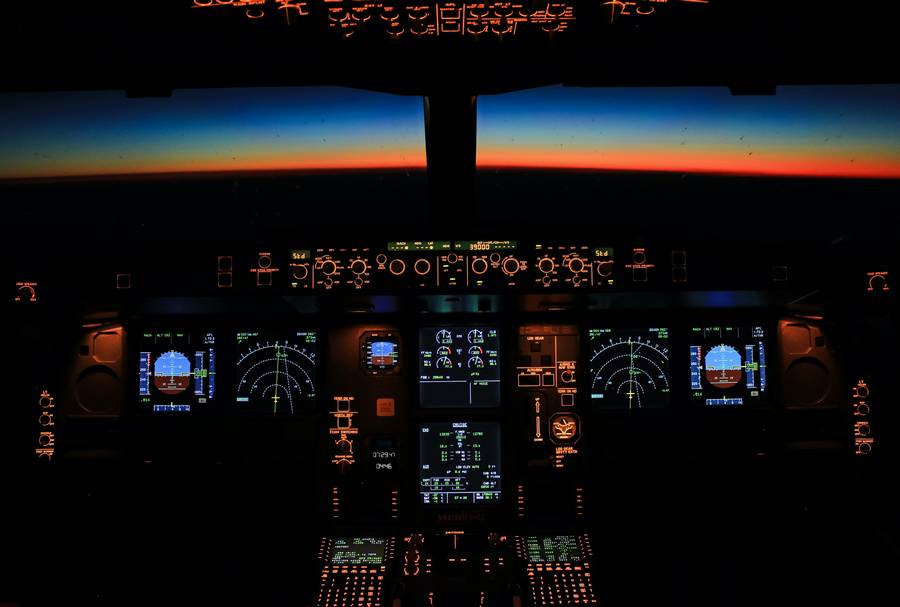More information has emerged about a serious incident that happened in May, showing that an A320 was seconds away from a ground collision.
This event involves a seemingly simple mistake in the aircraft’s altimeter setting. Neither the flight crew nor the air traffic controller picked up on it until the aircraft got incredibly low. By the time the crew went around, increasing power and pitching up, the aircraft descended further. The radio altimeter registered a minimum altitude of just six feet (1.83 metres)!
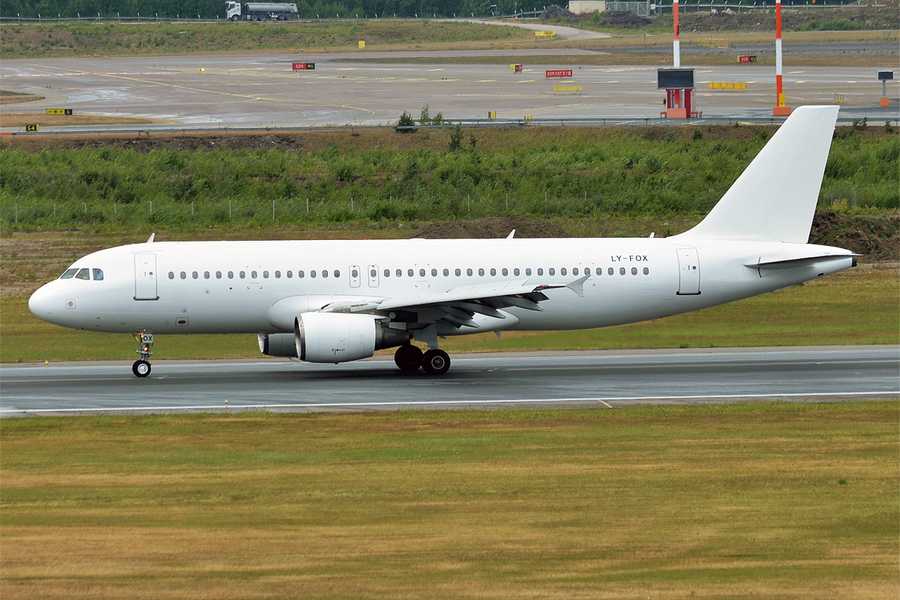
We already looked at this A320 near ground collision incident a few days after it happened. The new details here are coming from BEA, France’s air accident investigation bureau. It took place on Monday the 23rd of May this year. It involved D8-4311, a morning flight from Stockholm Arlanda (ESSA) in Sweden, to Paris Charles de Gaulle (LFPG) in France.
A320 Near Ground Collision – How The Incident Began
The operator of this flight is Airhub Airlines, which is a Malta-based subsidiary of GetJet Airlines. This caused some confusion because flight D8-4311 is a Norwegian Air Sweden route. But in the case of this near ground collision incident, Norwegian wet-leased an A320 and its crew from Airhub. This is also known as an ACMI (Aircraft, Crew, Maintenance, Insurance) lease.
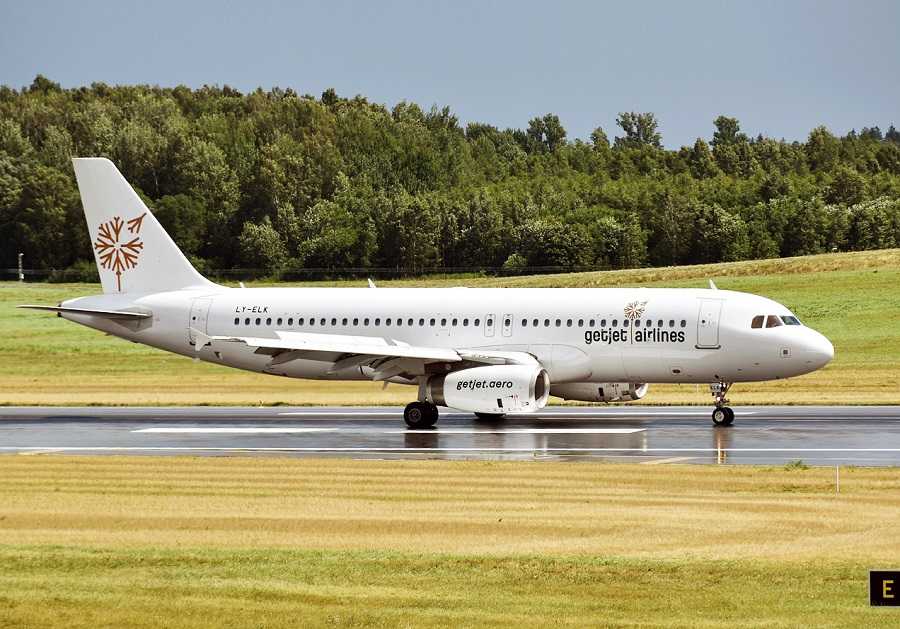
For this flight, the Captain was pilot-flying (PF). The crew were preparing for an RNP approach with LNAV/VNAV minima to Charles de Gaulle’s runway 27R. The ILS on the runway was unavailable at this time. After the incident, the crew stated that the approach was in cloud, with moderate turbulence and heavy rain.
The near ground collision incident sequence started when the controller gave the crew of the A320 the wrong QNH. The ATIS (Automatic Terminal Information Service) had given the QNH as 1001 (29.56 inHg). But the intermediate controller cleared the crew to descend to 6,000 feet, giving them the QNH as 1011 (29.85 inHg). The crew read back this QNH.
What this meant, was that the altitude the crew now saw in their instruments was approximately 280 feet higher than it should have been. After the near ground collision incident, the A320 crew said they conducted altitude distance checks every mile during the approach. But the altitude they were using as a reference was wrong, because of the QNH discrepancy.
Incident A320 – 6 Feet Off The Ground
However, the aircraft’s radio-altimeter (RA) still read the correct distance from the ground below them. This system started providing values to the crew when they descended below 2,500 feet AGL. When the aircraft was about one and a half-mile away from the runway, the controller got an alert. This was the Minimum Safe Altitude Warning (MSAW). At this time, the crew thought they were at 891 feet AMSL. They were actually at 617 feet AMSL or 200 feet above the ground.
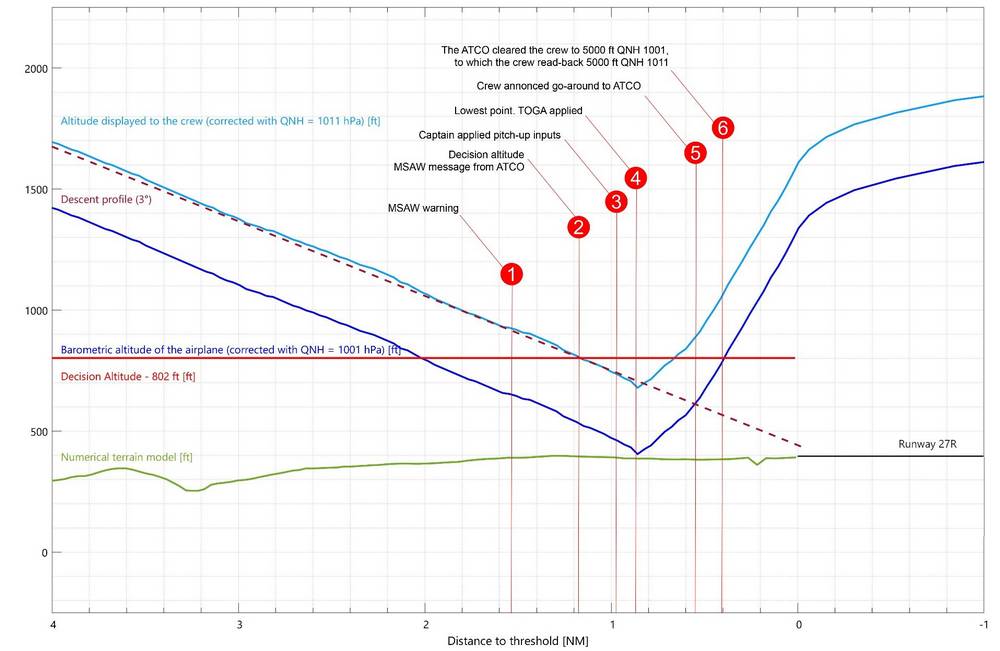
Nine seconds later, the flight crew thought they were at their decision altitude (approximately 400 feet AGL), still in IMC. In reality, the A320 in this incident was then at just 122 feet above the ground. At the same time, the controller said: “Red Nose 4311, I just had a ground proximity alert, are you okay? Do you see the runway?” The crew later stated that they didn’t hear this message.
But the crew did go around, just as the controller finished this transmission. They were 52 feet above the ground when they initiated the go-around. But it took another three seconds for the aircraft to stop its descent and start to climb again. This was when the A320 in this incident got the closest to the ground, at six feet. It was about 0.8 miles short of the runway threshold.
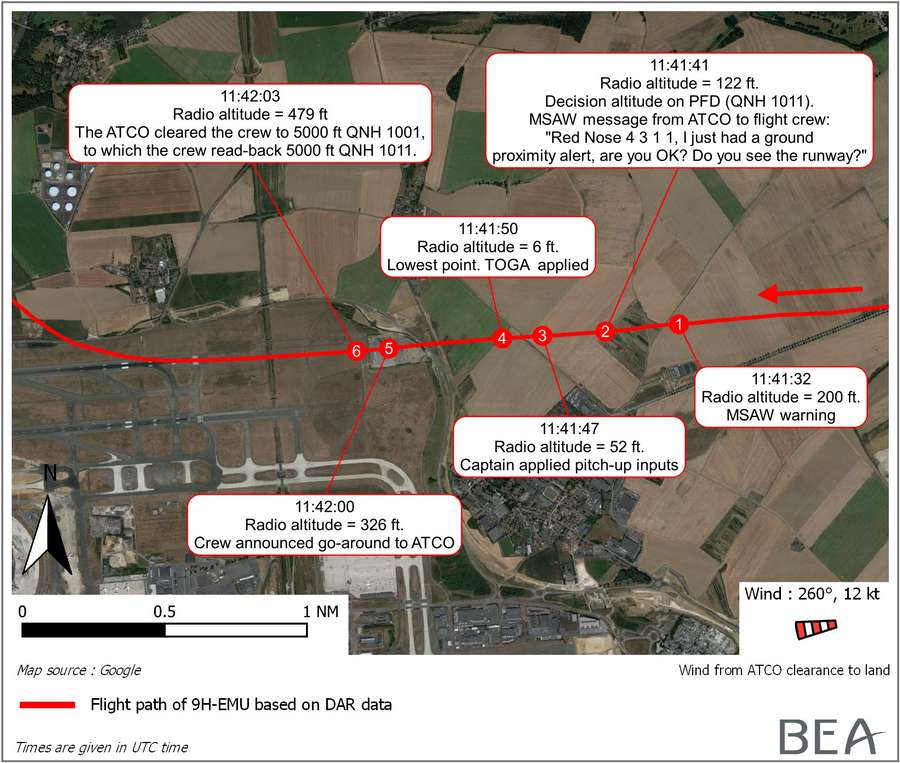
Second Approach
The crew thought they were around 280 feet higher. They said that they didn’t recall hearing any radio altimeter callouts below 1,000 feet. At the time, the crew announced that they were going around. The controller then cleared them to 5,000 feet. Also, the controller gave them the correct QNH, 1001. But the crew read back “1011”. However, the controller didn’t notice this error.
As the A320 crew in the incident climbed safely away from the ground, another controller advised those working this runway that they’d forgotten to switch on the approach lights. This, plus the MSAW alerts caused a change in controllers. The flight crew got vectors for another approach to runway 27R. But during multiple calls, neither the flight crew nor the controllers mentioned the QNH setting.

Since they were still using the wrong setting, the A320 crew in this incident triggered another MSAW alert, when they were 842 feet above the ground. They were still 3.1 miles away from the runway threshold. Again, the controller asked the crew if they were OK, telling them he got a terrain alert. This time, the First Officer (as pilot-monitoring) responded: “Red Nose 4311, we are established on path and have visual now”.
So this time, the A320 crew in this incident could see the ground. And when they got just under 600 feet AGL, the Captain disengaged the autopilot and made nose-up inputs. Eight seconds later, the crew disengaged their Flight Directors. The crew said that they definitely did not have four red PAPI lights. After correcting their flight path, the Captain landed the aircraft safely.

The Aftermath
It was only after they landed that the A320 crew in this incident learned that they had the wrong QNH, and got much closer to the ground than they thought. Unfortunately, the aircraft remained in operation. So investigators had no access to the CVR, before the crew’s conversation was deleted. But they got flight data from the DAR (Digital ACMS Recorder). This is a recorder that ground crews use for maintenance, which mirrors the data in the FDR.
The approach that this crew performed relies on satellite positioning for lateral guidance. But vertical guidance depends on the aircraft’s barometric altitude. So with a wrong QNH, it was difficult for the crew to identify the error. Other GNSS (Global Navigation Satellite System) approaches, such as RNP (LPV), use satellite information for vertical guidance as well.
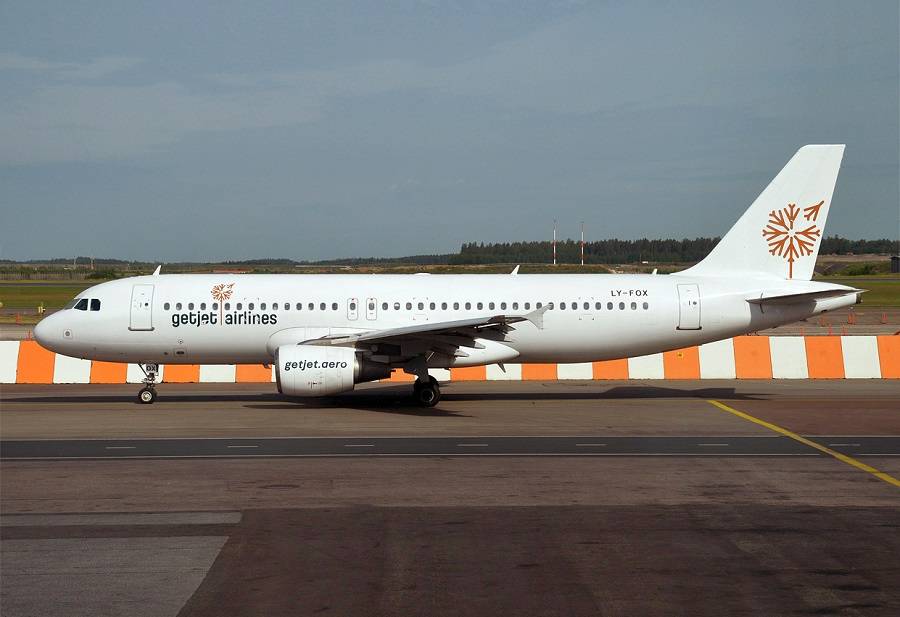
However, the A320 in this near ground collision incident didn’t have the necessary equipment for an RNP (LPV) approach. BEA is continuing this investigation, outlining some of the items that it is focusing on, like the apparent lack of a TAWS alert. In the meantime, the bureau is issuing a number of recommendations.
BEA is recommending that Air Traffic Control authorities implement a procedure to mitigate the risk of a wrong QNH. It also asks the authority to ensure that controllers understand the potential risks that such an error introduces in approaches using the baro-VNAV function. BEA makes the same recommendations for the flight crews of Airhub Airlines. It also asks that Airhub implements a procedure to mitigate these risks, by crosschecking the QNH with another source, like the ATIS.

